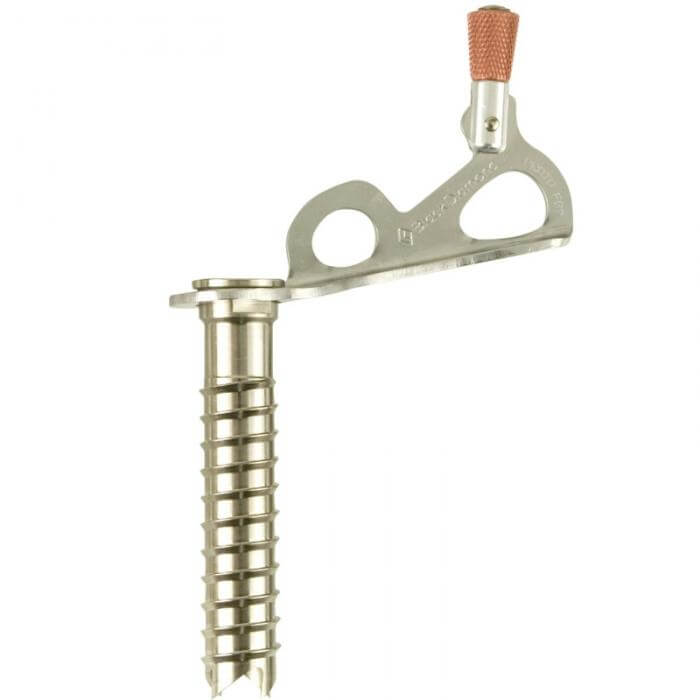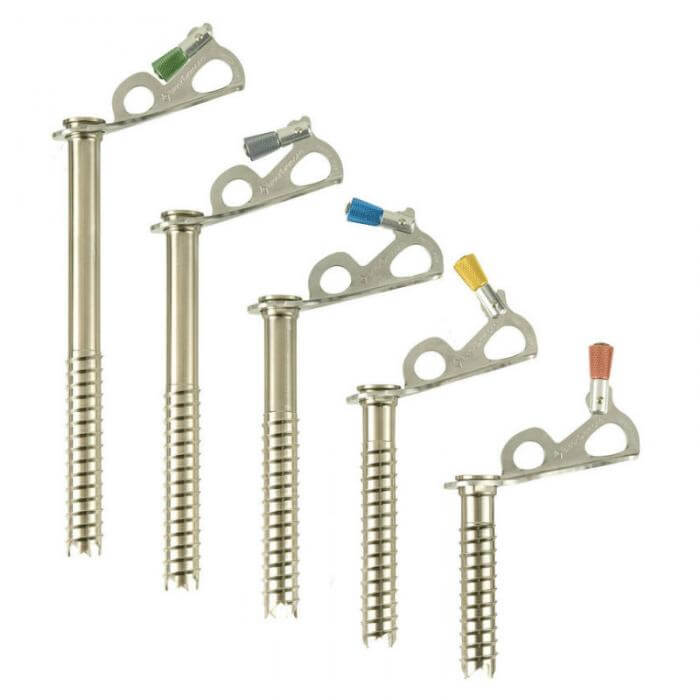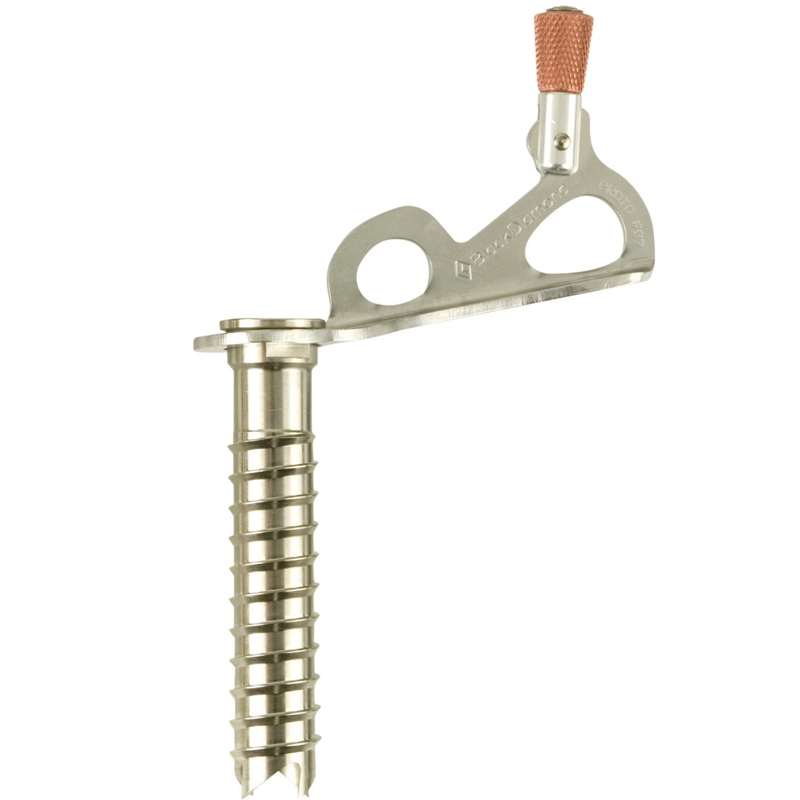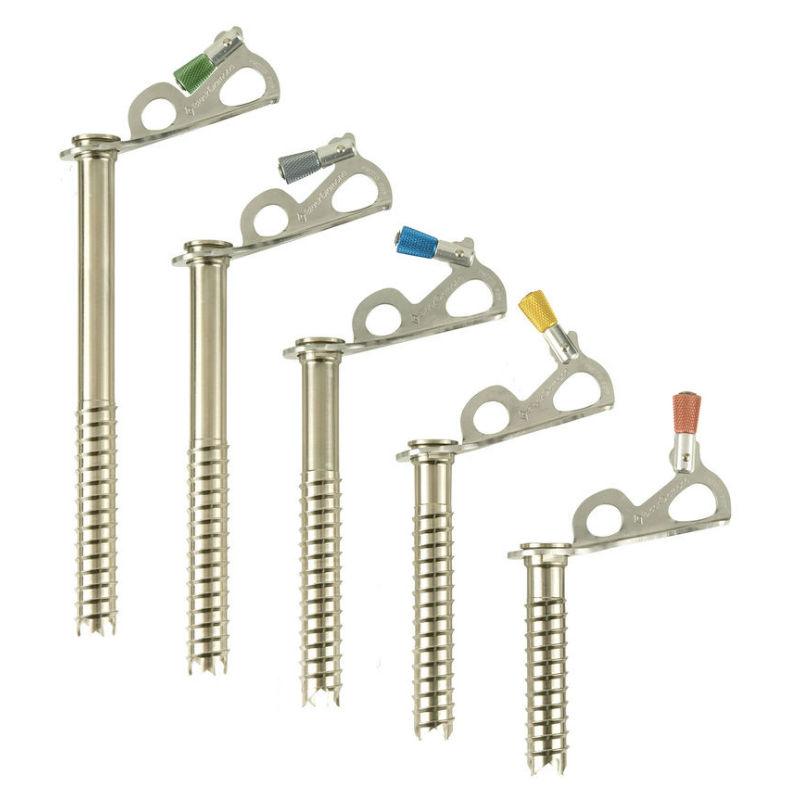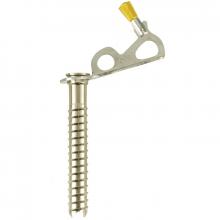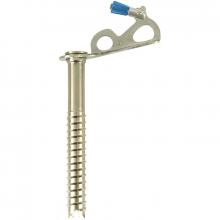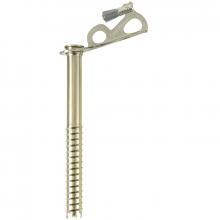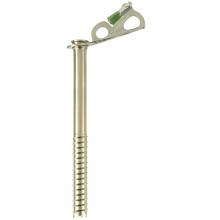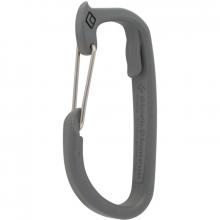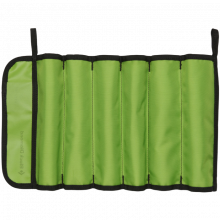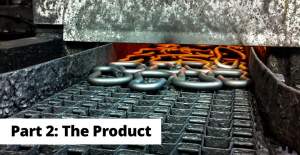A pictoral representation of the UIAA-151 and EN-568 standards for ice screws.
Express 10cm
Description
The easiest and fastest placing ice screws on the planet, the Black Diamond Express Ice Screw features a tapered tube where the teeth cut a hole just larger than the tube itself, for less friction during placements. A large, color-coded crank knob makes for easy size identification and uninterrupted 360-degree motion.
Retail price
When you click a link below and then checkout online, no matter what you buy (climbing gear or not), we get a small commission that helps us keep this site up-to-date. Thanks!


Weight (grams / ounces)  Weight (g / oz)In grams and ounces, the weight, as stated by the manufacturer / brand. | 118 g / 3.81 oz |
Length (cm)  Length (cm)Ice screws range between 6 - 30 cm. Generally speaking the sizes can be thought of as: Short - 13 cm and belowShort screws (“shorties” or “stubbies”) are for thin ice found on harder ice climbs and/or in crappy conditions. Medium - 14 - 17 cmWith ideal conditions climbers will be able to plug medium-sized screws with no problem. They have a nice weight to length balance. Long - 18 cm and aboveLong screws are most often used as anchors or in crappy ice conditions where they can go deep to find the real ice below. Mountaineers may also prefer long screws as they can gain better purchase in less than ideal ice and have less chance of melting out. How Many To CarryThere is no standard of how many screws to carry of each size. It will vary depending on where you’re climbing, your style of climbing and what level you’re climbing at. Some climbers will get a variety of the sizes, while others might get a majority of medium screws, a few shorties for thin spots and some long screws for anchors and bomber placements. Note: The amount of threading on each screw does not change even when the overall length changes (exception: e-climbs screws). |
10 cm |
Feature(s)  FeaturesNo Handle / KnobAbout 30% of the options 
Pros: Cheaper Cons: No “speed” handle/knob for faster threading Note: This is not currently a feature to filter on (coming soon), but is important to see the difference. Handle (non-fold)About 24% of the options 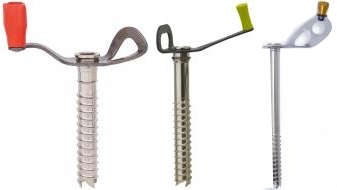
Pros: There is an extra “handle” or “knob” for faster screw threading. Cheaper than folding versions. Cons: Some of the knobs stick out substantially and could cause the rope or draws to get caught on the lengthened handle. Handle (folding)Around 42% of the options 
Pros: Foldable handle allows for quick threading and reduces snagging potential by folding out of the way. Cons: More expensive. Color CodingNearly 70% of the screws are color-coded, and this represents nearly all of the screws that have handles/knobs (color coding can also be on the hanger or the tube itself). 
Pros: Like on cams, color-coding makes for faster size identification. Cons: Generally color coding only comes on more expensive screws (with handles) There are 7 brands that follow red, yellow, blue, gray, green as a small to large standard, but that is not consistent across the industry. Sewn Sling (Pre-Attached to the Hanger)
Pro: You don’t have to carry quickdraws, so it saves weight and speed of clipping. Con: The length of this sling may not be ideal and it is not adjustable 2 Clip Points on the Hanger
Pro: More clipping options, especially ones that are closer to the ice to reduce leverage in a fall situation. Con: This comes standard on only a few screws so your options are limited. On some configurations this will also make the hanger much larger. Reverse Threading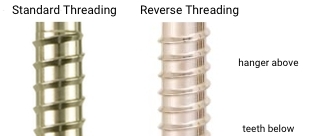
This is the most controversial feature. Grivel and CAMP (which make up 30% of the ice screw market) use reverse threading on all of their screws and claim that this angle is more effective at spreading an impact load across ice. If you are interested in the merits of the “reverse thread” design, click to see photos of the concrete tests (reverse threading pulls out more concrete than standard threading) and read about the concerns of testing in concrete. Read discussion of the engineering that goes into thread design and the questioning of straight pulls while testing to judge if reverse threading would make a [significant] difference in the event of a fall on ice. |
Folding Handle Color Coding 2 Clip Points |
Strength (kn)  Strength (kN)In kilonewtons, the strength as stated by the manufacturer / brand. |
10 kN |
Materials  MaterialsHangerThe material of the ice screw hanger (what you'd be clipping a carabiner into). Expect Stainless steel or aluminum here. TubeThe material of the tube of the ice screw (aka shaft). Most often it'll be Chromoly or steel but Grivel, Petzl and e-climb (and perhaps others) offer an aluminum tube ice screw option. Nearly 90% of ice screws are made from steel because steel is stronger and more durable. Aluminum screws will dull and wear out much faster and are not designed for crag-style ice climbing. They are specialty ice screws best used for fast and light ascents. TeethThe material of the teeth. Most often the tube material and the teeth material will be the same (e-climb and Petzl are exceptions). Often, screws with aluminum tubes will have steel teeth to help with durability. | Hanger: Stainless Steel Tube: Chromoly Steel Teeth: Chromoly Steel |
Certification  CertificationsThe main climbing gear certifications are CE and UIAA--and normally the UIAA creates the rules that the CE body also supports. When possible, we try to list all the certifications the product carries. To sell a climbing product in Europe, the device must be CE certified. There are no official requirements to sell climbing gear in the US. The UIAA certification is a voluntary process. Ice screws are not certifiable below 10cm. Learn MoreRock and Ice Certifications Guide |
|
No reviews yet.
On a stance, due to its two carabiner holes Express is obvious choice. I’m grabbing it also on cold hard ice in a difficult situation where I need a fast placement, especially if the placement location is suboptimal, i.e. I need to reach out further than I’d like (or thought due hollow spot).
Easiest to get started, harder the ice, bigger the difference
Has two carabiner holes (handy at stance)
Though the knob in the new model is larger, is still kind of small
High quality finishing
Racks well with other “standard” shaped screws
Set of these with appropriate amount of quickdraws weights about 200g more than the lightest alternative (provided that you use light quick draws, i.e. 70g each)
The Express is a classic design that looks very simple and yet works brilliantly. The hanger has been updated recently; most noticeably by the addition of a secondary clip in point for belays. The hanger is now also made out of stainless steel which won’t rust, and should not heat up as much as the old black hanger in the sun, thereby reducing melt-out (I’m not sure if anybody has ever experienced this in Scotland though!). The knob has also been made bigger, making it easier to use in thick gloves and less likely to be dropped. Less obviously the tube is now tapered so that it is wider at the tooth end than the hanger end, making the final turns quicker and easier. Thanks to the neat design the Express racks very well. Overall this screw is still one of the best and makes a great base for any winter rack.
Finally the screw itself is lighter, presumably from the reduced hanger weight. A 16cm weighs in at 5.2oz compared to the old model at 5.5oz. Not too significant: 17 of the old screws weigh as much as 18 of the new ones, to put it in perspective. BD's web site also notes that "all sizes of screws are now CE-certified," although their own comparison table still lists the shorty 10cm without the CE logo.
The Express ice screws bit exceptionally well in to the ice, meaning that they were amongst the fastest and easiest to place in the whole test. Once they have bitten, they were also very easy to wind in, with the handle and shape working exceptionally well.
Black Diamond Express - Ice Screw, 37 kb The threads were of average size, with a good design being angle on the entry size, flat on the rear side and of average size in terms of thread depth. We had no issues with the threads not biting and they gave confidence inspiring placements in old and new holes.
The heads racked quickly and neatly on ice screw clippers and were generally very easy to rack, un-rack as well as easy to place and remove from the ice.
Summary: A brilliant, well designed, well polished, easy to use, strong and simple ice screw that comes in a large range of sizes. Strongly recommended by the UKC test-team.
In hard ice, you can place a Black Diamond 22 cm Express Ice Screw in under 20 seconds, and sometimes half that. The Express Screws with aggressive teeth that are longer and sharper than those of a piranha, are easy to stab into the ice to get them started. Once you've set the screw, you unfold the small coffee-grinder handle that is integrated within the hanger, and spin in the screw. When you are done, you fold the knob back up and clip the stainless steel hanger. Color coding on the handle makes it easy to visually identify each length. After you remove a screw, a puff through the tube usually suffices to clear the ice core. The Express Screws are standard on my ice rack, and are what I measure all other ice screws against. On Colorado water ice I find the 16 cm length the most useful. The 22 cm are long, but good in funky conditions, and I've used the 10 cm—and gladly—on super thin and otherwise unprotectable ice.
Poor camera work but you can have an idea about effectiveness of Black Diamond Express Ice Screws.
This video, put out by Black Diamond, demonstrates how to properly sharpen your ice screws. Note: You may want to mute your speakers before watching this video, as there's no voice and the music may be unappealing to sensitive ears.
This isn't a product video per se, though Conrad does mention how nice the ice gear improvements are. Really, this video is just interesting to see a behind the scenes look at one of the athletes who use express screws. In addition to climbing, you'll also see Conrad Anker's gear room that includes a tribute to Alex Lowe.

